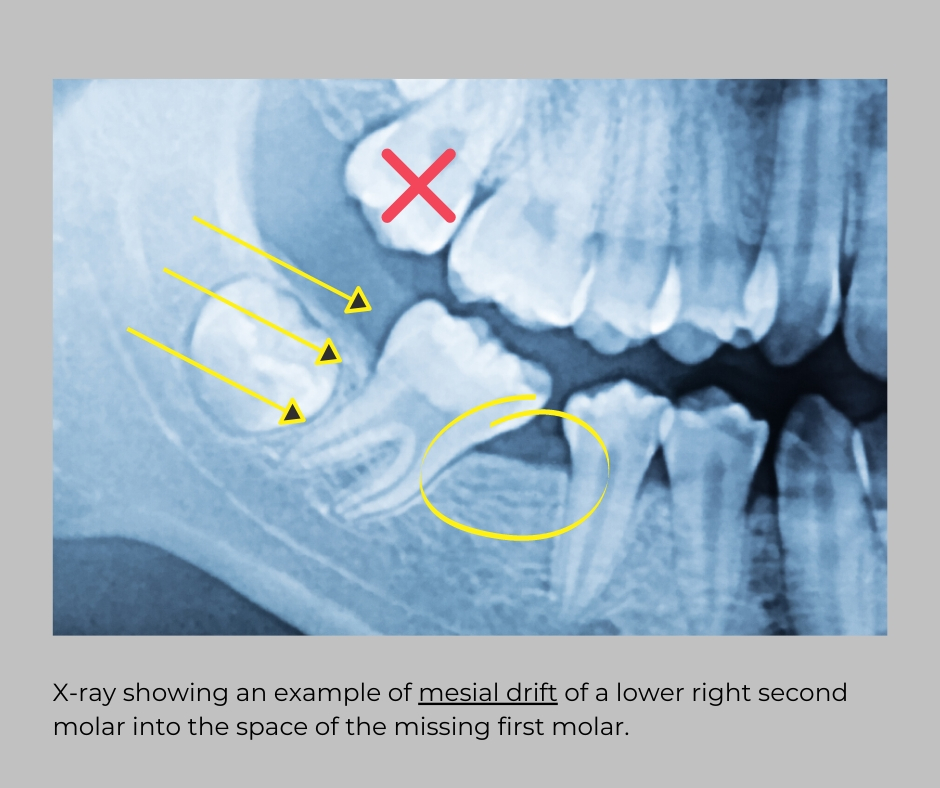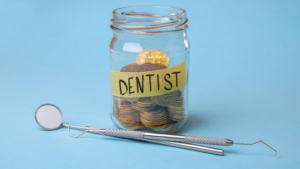You’ve been in agony for days, maybe weeks, and finally, you make it to the dentist only to be told you have just two options on the table to rid you of that torturous pain. One is cheaper – the other costs way more! You have minutes to decide before your allocated appointment time ends. The sadness, fear, and uncertainty surrounding your ability to make a sound decision in the heat of the moment set in. The dentist pauses while they watch you come to grips with the possibility of losing a tooth that’s served you pretty well up until now.
You don’t want to waste the dentist’s time.
You feel like it needs to be a quick fix so you can get on with life.
Mum and dad don’t have their teeth and it doesn’t seem to bother them.
So your mind is made up… “Rip it out thanks!”
So what is the actual cost of a tooth extraction?
When it comes to facing up to a toothache or a large broken tooth, the majority of the time your options are to go for a tooth extraction or save it. It’s that simple.
To save the tooth, your choices are usually; a big filling that will cost around $500 or more, but since often the filling material itself now becomes a majority of the tooth you bite on, the dentist holds very little hope it will be there in six months time; therefore, a porcelain crown (cap) is recommended to give the tooth back its strength and longevity, however, it’s going to set you back around $1600. The worse case still, the disease may have reached the nerve, which is why the pain is killing you, so now you’re up for a root canal before the crown can be done, costing you a further $1400 – $2000.
Wowee! Saving that one tooth could be in excess of $3000.
In comparison, the average cost of taking a tooth out, if it’s straightforward, could be as little as $159. The average cost of getting a tooth removed in Australia (April 2020)
Right now, in my experience, around 60% of patients are thinking…
“How much to save it?!!! Ummmmm, sorry – no can do. Just rip it out!”
Some might think dentists love hearing these words. Dentists are sometimes thought of as a sadistic bunch that thrives off the discomfort and pain of others. Why else would someone become a dentist?

I’m sorry to shatter the stereotype but this is not the case, and when those simple words quickly leave a patient’s mouth, in a situation when the dentist knows the tooth could be saved, they do cry a little inside for you.
That said, unfortunately, it’s no surprise when we do see patients opt to remove the tooth since cost appears to become the main consideration driving a patient’s decision in the heat of a dental emergency – and it’s completely understandable. It’s a lot of money!!!
In fact, according to the FDI World Dental Federation, around 30% of people globally aged 65–74 years have no natural teeth. This just highlights the number of times patients of the past have chosen to take the tooth out over the option to save. Most say it was the result of a financial decision for the first couple of teeth, after that, dentures (false removable teeth) were needed to help with chewing and appearance so it became a no-brainer to extract a tooth each time vs trying to save it. “I would just add it to the denture and get on with life” they would say.
Now you can see why we dental professionals cry a little inside each time we see a patient start on this path of tooth extraction, especially young people who have their entire life ahead of them and don’t really understand the impact of the decision they’re making for their long term health. In our experience, the first tooth to come out is often the beginning of the end for patients. Sadly, in years to come they too may very well become part of the statistic.
But it’s not all about the dollars. There are other factors at play here, often hidden deep down – almost unrecognizable emotions and beliefs, that do sway patients towards extracting a tooth vs saving.
1. The dentist just wants my money for a new car… or to go on a fancy holiday.
There’s the perception people think dentists are trying to ‘upsell’ to make more money. This is one reaction the dental team witnesses daily. Sorry again, I’m about to destroy another good stereotype.
Having managed successful dental practices for over 15 years, I know that in a lot of cases removing teeth can actually be one of the most profitable of all treatments for a practice. They have the lowest of all overheads and can be done in a reasonably short appointment time – meaning more patients can be seen and charged in a day. Sounds heartless, but that’s the reality behind the business side of dentistry.
Dentists are doing just fine financially without having to upsell every patient that walks through their door. Any dentist I’ve met throughout my time in the industry recommends treatment because they believe with all their knowledge, expertise and heart, that this is the right treatment for you. That’s it! Nothing more to it. The issue is, their recommendations and advice might not be in alignment with what you’re wanting to hear. So it’s easier to make the claim the dentist is trying to take you for a ride.
Dentists, for the majority, did not enter into the field of dentistry for the money, although it is one fantastic benefit of the job. They become a dentist because it’s actually a really great career. In fact in the States, it ranked #1 Best Health Care Job and #2 in the Top 100 Best Jobs, according to US News.
Read more about how they ranked the best jobs here.
The fact is, it’s about patient care, the challenges the job brings, relationships they form with their patients and team, the flexibility in working environments, and being part of improving the lives of others. They do truly care about what’s best for their patients, even if their chair-side approach may sometimes indicate otherwise.
With all that said, you must trust your gut instinct, and if this dentist seems shady, and I won’t lie there are some out there – just like in any industry sadly, then you walk away. Get a second opinion, do your research and look at all the facts relating to your condition. Use all this to support your decision on the best treatment for you, and who you’ll get to do it.
2. You just want a quick fix.
Totally understandable. This whole thing has been an unexpected, frustrating emergency. Sometimes money isn’t an issue at all. It’s just your lack of time. You’re busy – work, kids, study, social stuff, and now you’re being offered a quick solution to your problem and once it’s done, you walk out the door and never have to think about it again.
If you’ve kept up with this blog post so far, you now know you do have to think about it again. That gap in your smile is going to come back and haunt you at some stage (maybe a little, maybe a lot)…. that I can be sure of.
So where does that leave you?
If you’ve been given the option to salvage the tooth, and the dentist is confident the treatment will prolong its life for a reasonable amount of time, then I urge you to take a deep breath and strongly consider what’s on the table. Stop and give yourself a chance to think.
Things you might be able to do at this point to tied you over while you consider all your options;
Ask if there’s any chance of interim treatment. Something the dentist can do for you today that will get you out of trouble long enough for you to go home and consider your options with a clearer head.
What could some possible temporary/interim options be?
-
- A prescription for antibiotics and/or painkillers to reduce the symptoms of infection so you can feel human again, allowing you to do your homework and plan your next move. Writing you out a script is usually included in the cost of your consultation anyway so it won’t cost you any more to give yourself this time to walk away and consider your position. A consultation is usually between $60 – $100.
- Another option to get you away from that throbbing pain if the nerve has packed it in is placing an antibiotic paste inside the tooth. We call this an extirpation, and it’s the very first stage of root canal treatment – should you wish to proceed with this option at a later date. This should knock the pain on the head within two days and have you feeling much better. I must stress though, this pain-reducing solution won’t last forever! This is a temporary measure only, so you will need to figure out what you plan on doing next. The cost of this service varies but again, it should be similar to the cost of taking the tooth out so as far as what you’re going to spend on the day, it’s the same. The best part of doing this is you get to walk out with the tooth still in your head.
- If you’ve broken a tooth and it’s in need of a porcelain crown (cap), but the $1600 is too much to cough up today, ask if they can place a temporary tooth filling. This should be slightly cheaper than extracting the tooth or around the same cost. The purpose is to give you time to look at your budget and schedule to see if you can find a way to get the crown done so you get to keep your tooth. In the interest of helping you get optimal treatment for your future health, some dentists may even take the price of the temporary filling of the cost of the crown, if you choose to proceed – not all as it’s basically giving your free treatment, but it’s worth the ask.
3. It’s the cheapest option.
I love unpacking this particular reason the most, and you probably know why and where this is heading by now. That’s right! It’s because it’s not the cheapest option – long term. To help explain I’ll give you a crash course in Dental Extractions 101.

Most people don’t know this but teeth actually move naturally over time. The Dental Daily explains this in more detail here, but for now, all you need to know is what’s likely going to happen to you once you take that tooth removed. It’s called mesial drift, defined in the article as “the tendency of teeth to move in a mesial direction within the arch with an aim to maintain interproximal contact between teeth.”
Three things are happening in this x-ray image above I want to bring your attention to. This patient is missing the lower right first molar (tooth number 46 for all you dental savvy people). Over time, the molars behind it have drifted forward into its space, completely altering the way the jaw moves and how the teeth come together. That’s issue one. The second issue is they’ve now lost almost half of their chewing capacity which puts an additional load on the remaining teeth – load teeth aren’t designed to handle. This causes a stack of problems down the road as teeth chip and break, develop cracks and wear and eventually you’re going to be faced with repairing more teeth, or worse – adding it to the pile of teeth you’ve been donating to the tooth fairy.
The third issue, and the one very few people ever realize until it’s too late, is the natural tooth extraction of the opposing tooth. If you look at the image again, you’ll see the tooth at the very back on the top jaw is chilling out all by himself now. He’s got no one to connect with every time you bring your teeth together (chew/bite). His solution is to go looking for some company so he starts heading south, slowly moving his way out of your gum in the hope he meets his friend below. But it’s no longer there so eventually he moves his way down so far that the roots are exposed, the tooth becomes sensitive and vulnerable to decay, it even more annoying is it pushes on the gum below. One day you’ll be forced to hand him over to the tooth fairy too.
So from that moment when you thought of taking the tooth out as your cheapest option, you’ve now created a much more costly chain of events further down the road. And I haven’t even listed all of the other potential issues – jaw misalignment, gum disease, bone loss making it difficult to have a denture, altered speech, sunken cheeks…. you get it! It’s a nightmare.
I know what you’re thinking…
“All that’s great to know but I still have a raging toothache, the options to save it are too expensive for me right now, and I physically don’t have the time to come back and deal with it. I still just want the tooth out.”
Yep, you’re in a tough situation for sure, and even though most dentists will run through all the clinical reasons not to extract a tooth (where possible) every time a patient in the chair is faced with this decision, 30% of you will still opt to extract the tooth. If this turns out to be the case for you I have one more piece of advice. Get the gap filled as soon as possible!
Take the tooth out if you must but please go home, sit down, and put a plan in place to put something in that gap as soon as your budget and schedule allow. Modern dentistry opens the door for you to have several possible options to close the gap back in before all the issues I listed begin to happen. Don’t put your head in the sand – and most importantly, avoid this from happening again by visiting one of our AirSmile Partners for a check-up every six months so you never end up in this situation, to begin with. (come on…. you can’t blame me for slipping a tiny finger wag in at the end.)
Join AirSmile Today!
Find your perfect dentist in minutes.
Free to Join

Facebook
Youtube
Instagram






